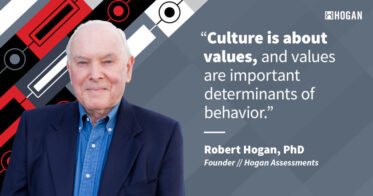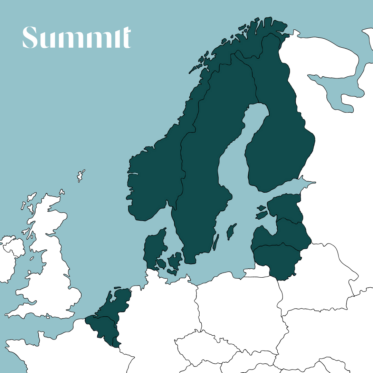Now the big question is what do you do and how do you approach this task?
If you’re like most, you’ll scroll through archive folders on the company’s internal server and find a generic job post that was written for another but similar position. Maybe you’re lucky to find the exact job description that was last used for the same position. This is especially likely if it was a rather quick turnover. You edit a bit to update it and make it feel fresh and you’re pretty satisfied with yourself. The next step is the job interview where you are confident in your own “eye for talent” as you have done job interviews for years and are known to be a great recruiter (Christensen, 2009). Is this a terrible approach – no. But can we optimise and qualify the process – yes, absolutely!
(If you’re still reading along – thank you! FYI, at the end of this article, you’ll find information on how and when to access a FREE interactive webinar with consultants from A&D Resources who will expand on the ideas in this article. Do you want to know more right now, please read on).
Here is why you should care and what to consider.
In the classic “The War for Talent”, Chris Czarnik argues how there has been a paradigm shift from “the old reality” where people needed companies, to the “new reality” where companies need people. Here, 86% of companies prioritise a significant number of resources towards attracting talents, but only 47% feel adequately skilled and equipped to do so (Czarnik, 1998). Further, Frankiewicz and Chamorro-Premusiz suggest that a set of post-pandemic rules of talent management is establishing themselves with a focus on “… well-being, equality, and productivity” as well as the talent pool now being truly global due to technology and a general mindset shift pushed by the pandemic (Frankiewicz & Chamorro-Premusiz, 2020). At last, according to a Morning Consult survey, 39% of workers and nearly half of millennial and Gen Z employees would consider quitting if their employers were not flexible about remote work (Cook, 2021).
Talent Geographically Unleashed
As we look to the future, it’s time to unleash this new way of working for the long term, with a focus on well-being, equality, and productivity that can work for both employers and employees long after this crisis ends. It’s time to embrace the truly global talent pool that is available to drive growth, regardless of where people call home.
Below are 3 steps that can help you feel more adequately skilled and equipped and ultimately get closer to winning the talent war.
1) Define what talent means for your company
First, all of us want talents, but we need to ask ourselves whether we in our company know what talent means to us or is it vaguely defined? For years, research on talent provided us with numerous different definitions trying to draw the line between nature and nurture. Thinking that we will ever universally agree on a talent definition is a utopia. Therefore, knowing what your company defines as talent is more important than the definition itself.
Let’s briefly describe three of the most well-established talent perspectives in talent research.
– The biological talent perspective is the earliest perspective described in the literature and is centred around a viewpoint that talent is depending on one’s genetic predispositions. Either you have got it from birth, or you haven’t. (Abbott. Et. Al, 2002).
– The psychological talent perspective is centred around the understanding that the deciding factor is the amount and the quality of practice. “The 10,000-hour rule” was popularised by Malcom Gladwell in his bestseller “Outliers” published in 2009 based on studies from very specific sports and music disciplines (Ericsson, 1996a/b & Ericsson et. al 1993).
– The holistic-ecological talent perspective is centred around a belief that acknowledges we are not born equal. Thereby genetic predisposal plays a role, but it’s not the deciding factor. This perspective also recognises that the amount of practice and the quality of that practice, which is referred to as deliberate practice, is important. However, again not exclusively the deciding factor. Finally, this perspective suggests that a part of talent is an active component in the individual utilising the strengths and compensating for the weaknesses in an environment (Henriksen, 2010).
2) What does that consequently mean for talent development?
The way that we view talent defines how we approach talent development, whether that is a conscious or unconscious choice.
– The biological talent perspective results in talent development being about spotting the right individuals who already possess talent. As they will naturally fulfil their potential and become high performers no matter where they are and what they do due to genetic predispositions.
– The psychological talent perspective results in talent development being about finding the individuals who are willing to work the most with the highest quality. The so-called 10,000-hour rule promises that you can become “world-class” at anything if you practice enough with the right amount of quality. The 10,000-hour rule has since been re-tested numerous amounts of times and cannot be replicated, which has led to what some researchers term the “10,000-hour lie” (Macnamara et. al, 2016).
– The holistic-ecological talent perspective results in talent development being like gardening (Bronfenbrenner, 1979). The focus is on creating the best possible growth opportunities for as many seeds/talents as possible for as long as possible. Thereby, focus shifts from the individual to relations, the overall environment, and the context. A question to ponder over is whether we are looking for smart people or want to create a smart context? (Barab et. al, 2002).
The three examples above should not be seen as the truth or the only valid way of looking at talent and talent development. Rather the interplay between how our understanding of talent influences and shapes our talent development. What is of essence is the conscious choice and an alignment between talent and the talent development pathway.
Let’s take you back to the beginning – your task was to find the right talent for the position. You have now consciously decided what talent means for you, and further you have also defined what talent development means for you – isn’t all good then at this point?
Yes and no.
This is what happens most of the time. In the short term, we get the job done by recruiting yet another employee and we might also have a developmental plan in place. This is the quick fix that extinguishes the small fires that appear naturally from time to time.
So why “no”?
We can do even better, but it’s a bigger investment of resources right now, which is why the next step is often skipped. However, if done correctly they will be paid back with interest long-term.
3) Develop competency and personality-based selection criteria
Simply looking at the step above is enough to get overwhelmed.
And yes, we kind of know what competencies and what personality characteristics we are looking for, but how does one assure that there is real validity and reliability to the selection criteria and that it’s not coloured by gut feel and one’s own biases?
We know that time is of the essence. So, if this article has spiked your curiosity, we would like to invite you to a webinar, where we will expand on our ideas.
The webinar will take place on June 13th 2-3 pm (CET).
Click here to secure your spot at the webinar.
Has this article not been clear enough or does it spark questions, please reach out to our consultant Adam Blicher at abl@adresources.com.
We look forward to seeing you at the webinar or interacting with you by mail.
References:
Abbott, A., Collins, D., Martindale, R. J. J., & Sowerby, K. (2002). Talent identification and development: An academic review Report for Sportscotland by Edinburgh University.
Barab, S. A., & Plucker, J. A. (2002). Smart people or smart contexts? Cognition, ability, and talent development in an age of situated approaches to knowing and learning. Educational Psychologist, 37, 165-182.
Bronfenbrenner, U. (1979). The ecology of human development. Cambridge: Harvard University Press.
Christensen, M. K. (2009). An Eye for Talent: Talent Identification and Practical Sense of Top-level Soccer Coaches. Sociology of Sport Journal, 365-382.
Cook, R. (2021). 5 must-haves to win the post-pandemic war for talent. Human Resource Executive.
Czarnik, C. (2001). The War for talent. McKinsey & Company, All Rights Reserved. (Published by Harvard Business School Press.)
Ericsson, K. A. (1996a). The road to excellence: The acquisition of expert performance in the arts, sciences, sports and games. Mahwah, NJ: Erlbaum
Ericsson, K. A. (1996b). The role of deliberate practice in the acquisition and maintenance of expert performance. International Journal of Psychology, 31, 4661.
Ericsson, K. A., Krampe, R. T., & Tesch-Römer, C. (1993). The role of deliberate practice in the acquisition of expert performance. Psychological Review, 100, 363-406.
Ericsson, K. A., Krampe, R. T., & Tesch-Römer, C. (1993). The role of deliberate practice in the acquisition of expert performance. Psychological Review, 100, 363-406.
Frankiewicz, B., & Chamorro, T. (2020). The post-pandemic Rules of talent management. Harvard Business Review. Technology and Analytics.
Henriksen, Kristoffer. (2010). The ecology of talent development in sport: A multiple case study of successful athletic talent development environments in Scandinavia.
Macnamara BN, Hambrick DZ, Moreau D. How Important Is Deliberate Practice? Reply to Ericsson (2016). Perspectives on Psychological Science. 2016;11(3):355-358. doi:10.1177/1745691616635614
Schein, E. G. (1990). Organizational culture. American Psychologist, 45, 109-119.
This post was originally published on the Hogan Assessments blog.



